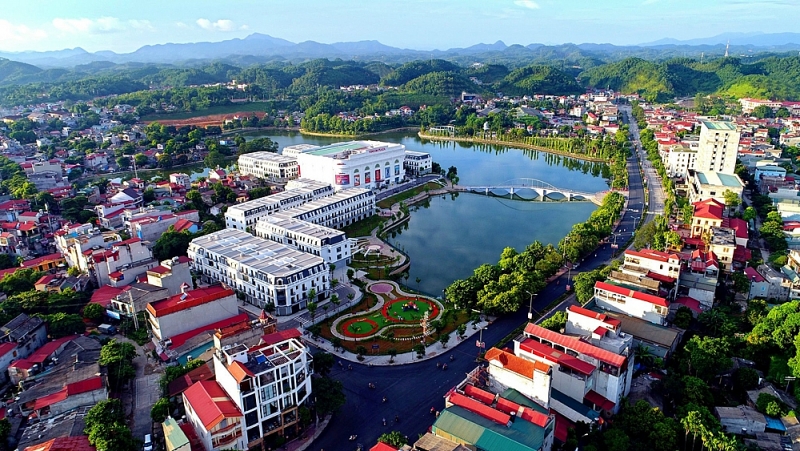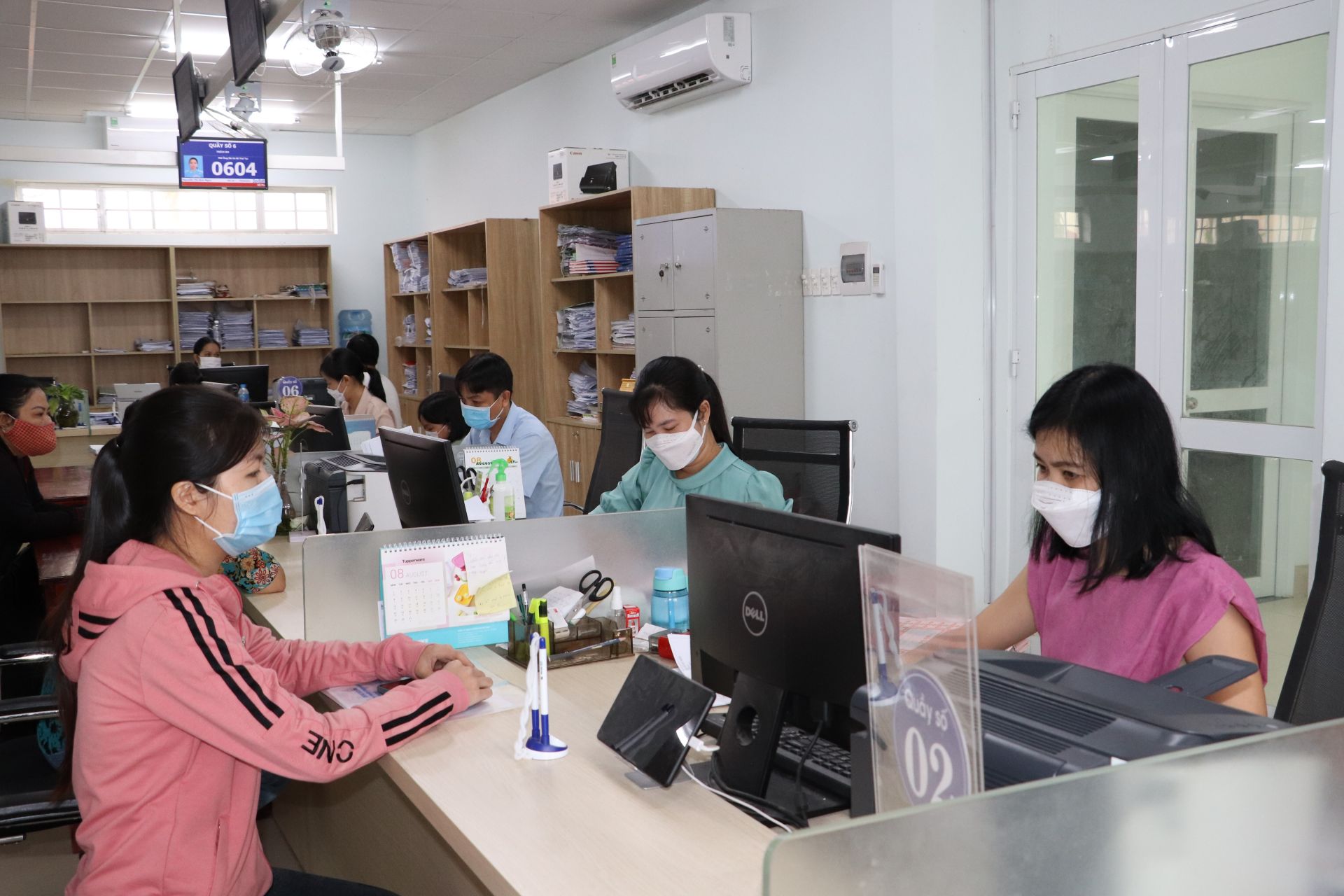By 2030, Yen Bai to be in the group of 5 leading developed provinces in the northern midlands and mountainous regions in Vietnam
By 2030, what province will Yen Bai become in Vietnam? – Nhat Linh (Da Nang)

By 2030, Yen Bai to be in the group of 5 leading developed provinces in the northern midlands and mountainous regions in Vietnam (Internet image)
Regarding this issue, LawNet would like to answer as follows:
On September 18, 2023, the Prime Minister of Vietnam issued Decision 1086/QD-TTg approving the Planning of Yen Bai province for the period 2021–2030, with a vision to 2050.
By 2030, Yen Bai to be in the group of 5 leading developed provinces in the northern midlands and mountainous regions in Vietnam
Specifically, the development goals of Yen Bai province until 2030 set by the Prime Minister are as follows:
(1) General objective
Promoting the strength of great solidarity, the will to be self-reliant, and the desire for development; effectively exploiting all potentials and advantages; Promote the application of science and technology, digital transformation, and innovation; mobilize and effectively use all resources for rapid, comprehensive, and sustainable development in the direction of "Green, harmony, identity, and happiness"; promote the value of national cultural identity; build Yen Bai people to be "friendly, compassionate, united, creative, and integrated"; protect the ecological environment; effectively use resources; proactively respond to natural disasters and adapt to climate change; strengthen national defense and security; maintain political security; and ensure social order and safety.
Strive to put Yen Bai in the group of 5 leading developed provinces in the Northern midland and mountainous region.
(2) Specific objections
- Economic
+ The average growth rate of gross regional product (GRDP) reaches 8.5%/year.
+ Economic structure: Agriculture, forestry, and fisheries account for about 14.8%; industry - construction accounts for about 39.0%; services account for about 41.5%; Product taxes, excluding product subsidies, account for about 4.7%.
+ GRDP per capita reached over 125 million VND.
+ State budget revenue in the area increased by an average of 15%-18%/year.
+ Total investment capital for social development in the period 2021–2030 reaches about 280,000 billion VND. The average contribution of total development investment capital in GRDP is 43%–48%.
+ Digital economy accounts for 13.5% of GRDP.
+ The urbanization rate reaches 28%-30%.
+ The average social labor productivity growth rate reaches 7.3%/year.
- Regarding society
+ The average population growth rate reaches 0.92%/year.
+ The average life expectancy of people reaches 75 years; the number of years of healthy life is at least 68 years.
+ People's happiness index increased by 25% compared to 2020.
+ The rate of trained workers reaches 75%, of which the rate of trained workers with diplomas and certificates reaches 45%.
+ The rate of labor restructuring from agriculture to non-agriculture in the period 2021–2025 reaches 2.0%/year, in the period 2026–2030, it reaches 1.5%/year.
+ The poverty rate in the period 2022–2025 will decrease by an average of 3.3%/year according to the multidimensional poverty standard for the period 2022-2025; in the period 2026–2030, it will decrease by an average of 2.0 - 2.5%/year according to the poverty standard for each period.
+ There are 15 doctors per 10,000 people; 37 hospital beds per 10,000 people; Health insurance coverage rate reached over 97%.
+ By 2030, there will be 7 district-level administrative units that meet or complete new rural construction standards, of which 1 district meets model new rural standards, 2 districts meet advanced new rural standards; 90% of communes meet new rural standards, 40% of communes meet advanced new rural standards, and 20% of communes meet model new rural standards.
- Regarding people's living standards and environmental protection
+ The proportion of the urban population provided with clean water through the centralized water supply system reaches 95%; the proportion of the rural population using clean water of standard quality reaches 50%.
+ Urban solid waste collection and treatment rate is over 95%; Strive to have 100% of urban solid waste collected and processed by traditional burning methods and incineration with energy recovery, enhancing the ability to recycle, reuse, and combine treatment with organic fertilizer production.
+ Rural solid waste collection rate reaches over 60%; strive to have all collected rural solid waste processed centrally. For rural solid waste that is not collected centrally, make the most of organic waste to reuse, recycle, compost, or self-process in households into compost for on-site use, ensuring hygiene.
+ The rate of medical waste treated reaches 95%.
+ The rate at which industrial solid waste is treated reaches 100%.
+ The rate of wastewater collected and treated in urban residential areas reaches 100%, in rural residential areas, it reaches 75%.
+ The rate of industrial parks with centralized wastewater collection and treatment systems meeting environmental technical standards reached 100%.
+ Forest coverage rate remains stable at about 63%.
Thus, by 2030, Yen Bai province will strive to be in the group of 5 leading developed provinces in the northern midland and mountainous region.
More details can be found in Decision 1086/QD-TTg, effective from the date of signing.
- Number of deputy directors of departments in Vietnam in accordance with Decree 45/2025/ND-CP
- Cases ineligible for pardon in Vietnam in 2025
- Decree 50/2025 amending Decree 151/2017 on the management of public assets in Vietnam
- Circular 07/2025 amending Circular 02/2022 on the Law on Environmental Protection in Vietnam
- Adjustment to the organizational structure of the Ministry of Health of Vietnam: Certain agencies are no longer listed in the organizational structure
- Vietnam aims to welcome 22-23 million international tourists in Vietnam in 2025
-

- Emergency response and search and rescue organizations ...
- 10:29, 11/09/2024
-

- Handling of the acceptance results of ministerial ...
- 09:30, 11/09/2024
-

- Guidance on unexploded ordnance investigation ...
- 18:30, 09/09/2024
-

- Sources of the National database on construction ...
- 16:37, 09/09/2024
-

- General regulations on the implementation of administrative ...
- 11:30, 09/09/2024
-

- Notable new policies of Vietnam effective as of ...
- 16:26, 11/04/2025
-
.Medium.png)
- Notable documents of Vietnam in the previous week ...
- 16:21, 11/04/2025
-
.Medium.png)
- Notable documents of Vietnam in the previous week ...
- 16:11, 02/04/2025
-
.Medium.png)
- Notable new policies of Vietnam to be effective ...
- 16:04, 02/04/2025
-
.Medium.png)
- Notable new policies of Vietnam effective from ...
- 14:51, 21/03/2025
 (1).png)
 Article table of contents
Article table of contents
